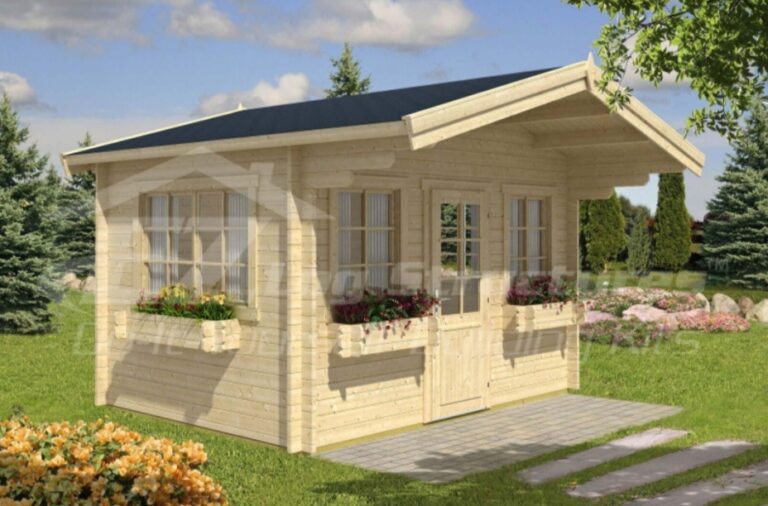Building your own log cabin in the city of Ontario can be an exciting venture, but selecting the right log cabin kit is crucial to ensure your project’s success. From considering your budget to understanding assembly requirements, navigating the options available can seem daunting. This step-by-step guide is designed to simplify the process and help you find the perfect log cabin kit that suits your needs and preferences.
Step 1: Define Your Requirements
Before diving into the specifics of log cabin kits in Ontario, take some time to outline your requirements and preferences:
- Size and Layout: Determine the size of the cabin you need based on your intended use (e.g., vacation retreat, full-time residence). Consider the number of bedrooms, bathrooms, and common areas required.
- Budget: Set a realistic budget for your log cabin project. Remember to include not just the cost of the kit itself but also additional expenses such as foundation, utilities, and interior finishes.
- Location: Consider the location on your property where you plan to build the cabin. Factors such as terrain, accessibility, and local building codes may influence your choice of kit.
Step 2: Research Log Cabin Kit Providers
Once you have a clear idea of your requirements, start researching for reputable log cabin kit providers in Ontario. Here are some ways to find potential suppliers:
- Online Search: Use search engines to find companies specializing in log cabin kits in Ontario. Look for websites that provide comprehensive information about their products, services, and customer reviews.
- Local Recommendations: Reach out to friends, family, or local builders who may have experience with log cabin kits. Personal recommendations can provide valuable insights and help you narrow down your options.
Step 3: Compare Kit Options
Once you’ve identified several potential kit providers, it’s time to compare their offerings in detail. Consider the following factors:
- Materials: Review the types of wood used in each kit (e.g., cedar, pine, spruce) and the thickness of the logs or log siding. High-quality materials ensure durability and energy efficiency.
- Included Components: Determine what is included in each kit (e.g., logs, flooring, roofing materials, windows, doors). Some kits may offer additional features or customization options.
- Customization: Assess the level of customization available. Can you modify the floor plan or choose alternative materials? Customizable kits allow you to tailor the cabin to your specific preferences.
- Assembly Requirements: Check whether the kit is designed for DIY assembly or if professional assistance is recommended. Consider your own construction skills and availability when evaluating assembly requirements.
Step 4: Request Quotes and Specifications
Contact each kit provider to request detailed quotes and specifications. This step allows you to compare costs and understand exactly what is included in each kit:
- Cost Breakdown: Request a breakdown of costs, including materials, delivery charges, and any additional fees. Be clear about your budget constraints to ensure transparency in pricing.
- Specifications: Review the specifications for each kit, including dimensions, materials used, and any warranty information. Clarify any questions you have about assembly or customization options.
Step 5: Visit Showrooms or Display Sites
If possible, visit showrooms or display sites where you can view assembled log cabins firsthand. This step provides an opportunity to:
- Assess Quality: Evaluate the quality of materials and craftsmanship used in each kit. Pay attention to details such as joinery, insulation, and overall finish.
- Visualize the Cabin: Visualize how each cabin design would fit into your desired location and lifestyle. Consider how natural light enters the space and the overall feel of the interior.
Step 6: Consider Additional Services
Inquire about additional services offered by each kit provider, such as:
- Delivery Options: Confirm how the kit will be delivered to your site and any associated costs. Timely delivery is crucial to keeping your project on schedule.
- Assembly Assistance: Determine if the company offers assembly services or can recommend contractors experienced in assembling their kits. Professional assistance may be beneficial for complex designs or large cabins.
Step 7: Read Customer Reviews and References
Before making a final decision, read customer reviews and testimonials from previous buyers. Customer feedback can provide valuable insights into the following:
- Customer Service: Evaluate the responsiveness and helpfulness of the kit provider’s customer service team.
- Long-Term Satisfaction: Learn about the cabin’s durability and performance over time. Look for reviews that mention ease of assembly, quality of materials, and overall satisfaction with the purchase.
Step 8: Make Your Decision
After completing thorough research and comparisons, it’s time to make your decision and place an order for the log cabin kit that best meets your needs. Ensure you have:
- Finalized Budget: Confirm that the chosen kit fits within your budget, including all anticipated expenses.
- Clear Understanding: Double-check all specifications and ensure you understand the terms and conditions, including warranty coverage and return policies.
- Delivery Schedule: Confirm the delivery schedule and make arrangements for site preparation and assembly, if applicable.
Conclusion
Choosing the perfect log cabin kit in Ontario requires careful consideration of your requirements, thorough research, and comparison of available options. By following this step-by-step guide, you can navigate the process confidently and select a kit that not only meets but exceeds your expectations. Whether you’re building a weekend getaway or a permanent residence, investing time in choosing the right log cabin kit will pay off in the form of a beautiful and comfortable retreat amidst Ontario’s natural beauty.
